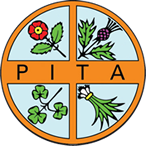There is a bright future for printed books, a recent survey finds. According to the results, printed books will continue to be important, relevant, interesting and still very much appreciated compared to e-books and audiobooks.
As one of the leading book paper and cover providers, Stora Enso conducted a study with 80 in-depth interviews in 13 countries across Europe, Asia and North America together with research company Opticom International.
The aim was to gain a better understanding of the challenges and opportunities regarding book publishing and consumption. Participants included publishers, retailers, printers, merchants and new players such as audio and e-book publishers as well as companies that transfer physical books into digital format.
“One of the main findings was that there is a positive future for printed books”, says Essi Lauri, VP, Head of Segment Newsprint & Book, in Stora Enso Paper division.
Printed and digital together are the future
While audio and e-books are important in professional and educational segments, only eight percent believe that e-books will grow in volume.
“Interest in e-books seems to have plateaued somewhat, and audiobooks are not necessarily seen as an alternative to physical books, rather a complement. You can listen to an audiobook while driving a car or jogging, where reading a physical book would be impossible”, says Essi Lauri.
E-books sales have been strong in the UK and US (approx. 20% of the market), but have stagnated in recent years and have not affected print sales as much as expected. In France and Germany e-books represent less than ten percent of the market. In emerging markets, the interest for e-books appears weaker, regardless of the rapid growth in tablet and smartphone users.
Audiobooks, on the other hand, continue to increase in sales, mostly via crime novels, true stories, biographies, romantic and erotic genres. However, the majority of the respondents see audiobooks as a compliment, not an alternative − consumers have a choice. In addition, there is no indication that Millennials would prefer digital more than older generations.
‘The more things go digital, the more value there is in the printed product’
Another finding is that people want to have a counterweight to screen time. As one respondent put it, ‘The more things go digital, the more value there is in the printed product.’
“Holding a physical book gives you a different feeling than holding an e-book. It’s an experience. And here, the paper and book cover, the tactile features and quality material, are important”, Essi Lauri continues.
Certain types of books it seems are meant to remain in paper format. Examples of these are hard cover books, including children’s books, photography books, books given as gifts and hobby related books such as Do It Yourself, gardening and cook books.
